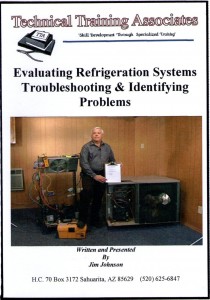Low-pressure controls are a common accessory added to many refrigeration systems. They are normally used to electrically cycle a compressor on and off; however, when and why they do so will vary based on the design of the system.
When working on a system, it is important to determine how the low-pressure control is being used and, if adjustable, make sure it is properly set. Low-pressure controls can be used to:
- Directly control a case’s temperature by cycling a compressor on and off at the required coil temperatures; on medium-temperature equipment, this will also provide a means of defrosting the evaporator;
- Cycle a compressor on and off when used on a pump down system; and
- Protect the compressor from operating outside its maximum compression ratio.
When used to control the case temperature on medium-temperature equipment, it is set to cycle the compressor back on at a pressure that equals a coil temperature that ensures the evaporator is void of frost and at an acceptable case temperature. It should also be set to cycle the compressor off at a pressure equal to the lowest desired coil/case temperature for its design.
For example, on an R-134a medium-temperature cooler, a cut-in value of 33 psig would cycle the compressor on at a saturation temperature of 38°F. This would provide adequate defrosting of the evaporator during the off cycle and prevent the case temperature from rising above unsafe limits. A cut-out value of 15 psig would cycle the compressor off at a saturation temperature of 15°F. If the evaporator coil is designed with a 20°F temperature difference, this would cause the compressor to be cycled off at a case temperature of 35°F.
When an outdoor condensing unit is installed in an area of the country where the ambient temperature could drop lower than the evaporator’s temperature, it will generally use a pump-down system to control the operation of the compressor. The temperature control will de-energize a solenoid installed in the liquid line, which will stop the flow of refrigerant to the metering device and into the evaporator. With the compressor still running, the refrigerant will be pumped out of the evaporator. When the low-side pressure gets to a value that ensures the refrigerant is sufficiently pumped out of the evaporator, the low-pressure switch will cycle the compressor off.
The cut-in value of the low-pressure switch is generally set to a saturation pressure equivalent to the minimum expected ambient temperature. One manufacturer recommends a low-pressure switch setting of 15 psig cut in and 4 psig cut out, but that may not be an acceptable setting for all systems and all manufacturers. Always consult with the equipment manufacturers for their recommendations.
Any compressor operating for extended periods of time outside its maximum compression ratio will result in premature failure. Compression ratio is defined as the compressor’s absolute discharge pressure divided by its absolute suction pressure. To calculate this value, convert the compressor’s psig reading to psia by adding 14.7 to the psig value. For example, a compressor operating with a discharge pressure of 135.3 psig and a suction pressure of 15.3 psig will be operating at a 5:1 compression ratio: (135.3 psig + 14.7 psi) ÷ (15.3 psig + 14.7 psi).
If the suction pressure of a system drops, as in the case of a loss of refrigerant, it can cause the compressor to operate outside its maximum compression ratio and possibly cause internal damage to the compressor. To prevent this, a low-pressure switch will sense this drop in pressure and shut down the compressor until the cause of the low-pressure issue is identified and repaired. The cut-out value of the low-pressure switch should cycle the compressor off before allowing it to operate outside its maximum compression ratio for an extended period of time.
See more articles from this issue here!











